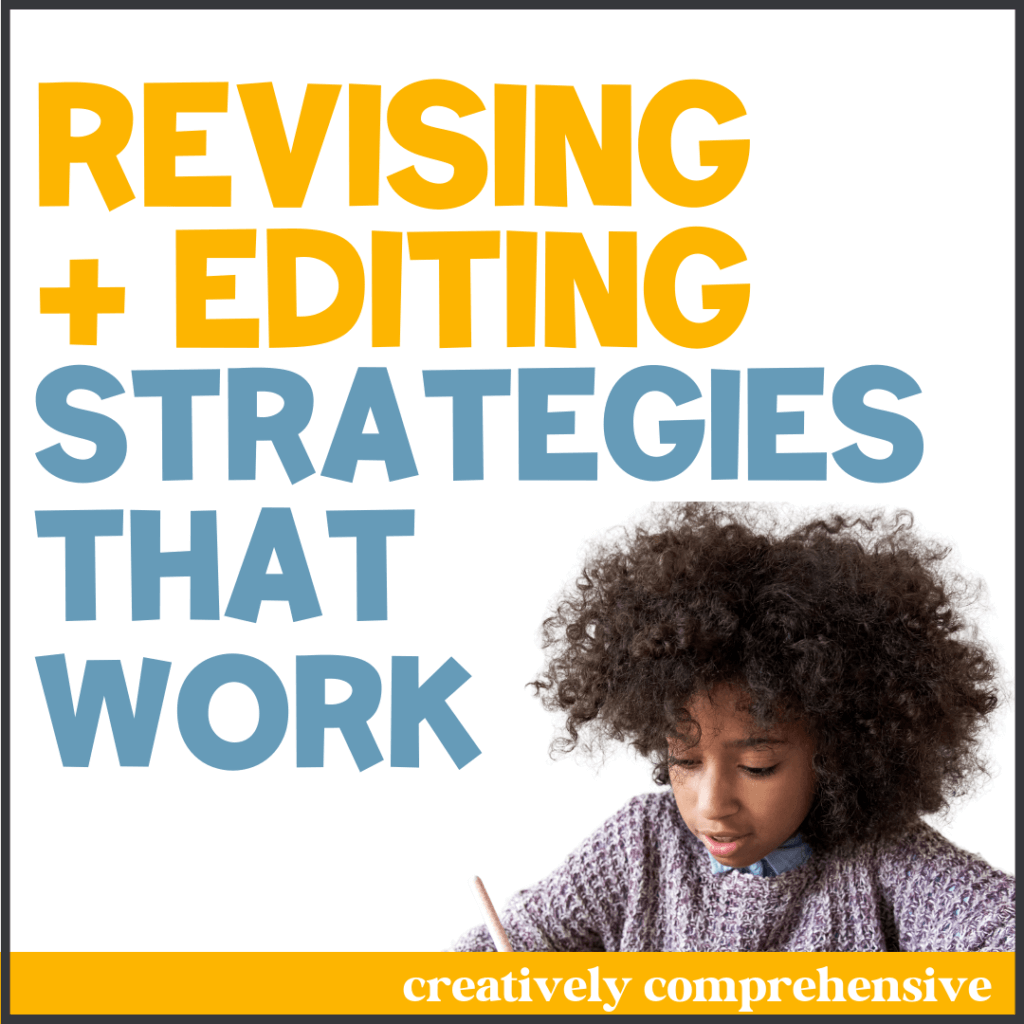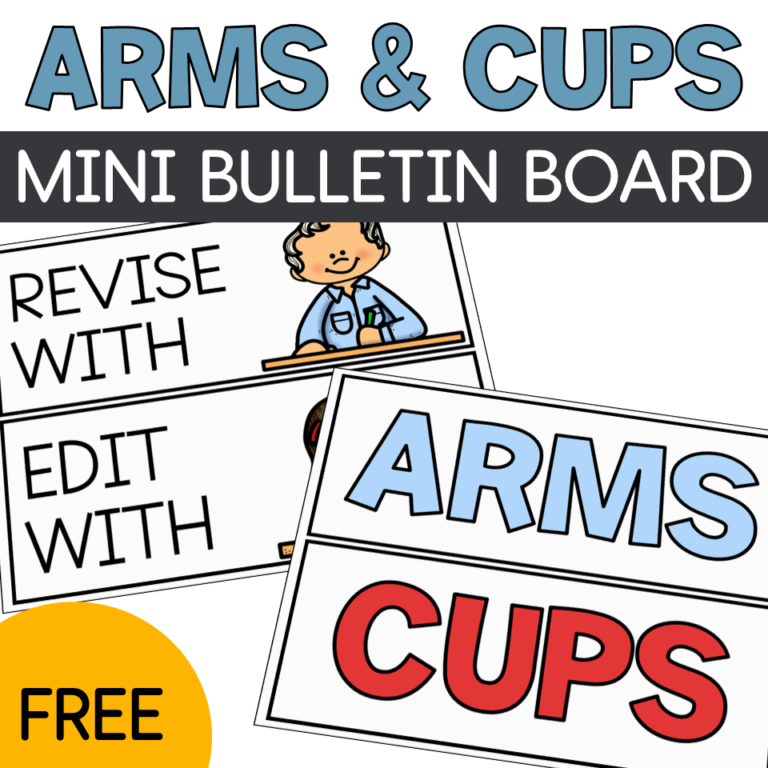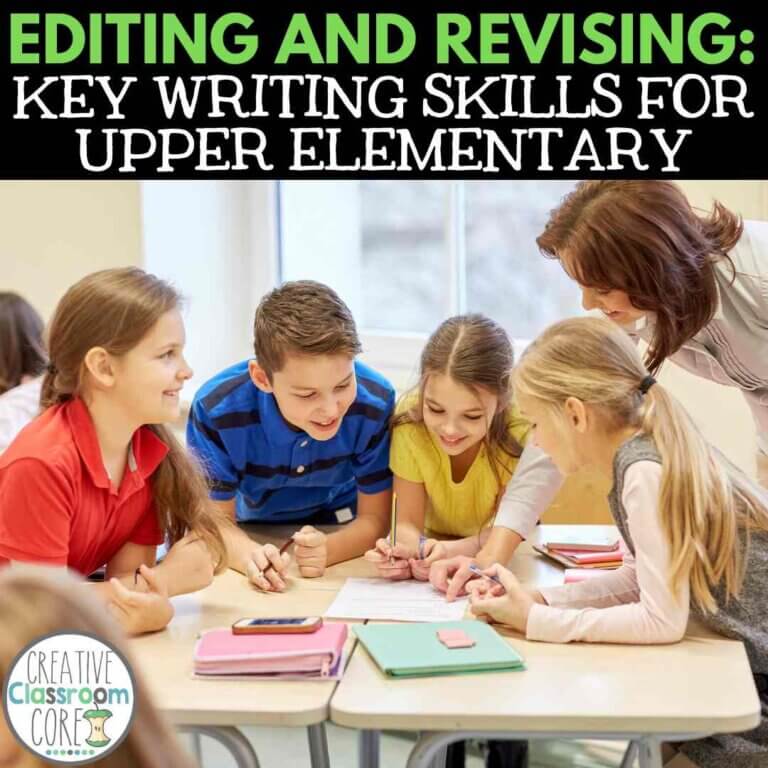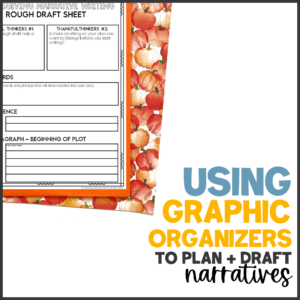By Marianna Monheim and Marissa Despins, updated 1/9/2024
I know what you’re thinking…it’s hard enough to get upper elementary students to write these days, let alone revise or edit! However, we would be doing a disservice to students by not teaching them these important parts of the writing process. Below you will find some ideas to make revision and editing an essential part of your writing block.

Done-for you revising and editing stations can be found in my TPT store!
Before your students begin a writing piece, emphasize the importance of the process…because the actual writing is just one small part of the actual process. Make sure to explicitly teach about planning and drafting in addition to writing, revising, and editing. We want students to get out of the mindset that once they are done writing, they’re finished…it’s important to go back and look at their work with a critical eye.
Steps for Revision
Table of Contents
Have you been met with blank stares when asking your students to revise their work? Most students truly have no idea what revision is. Therefore, it’s important to provide them with a systematic approach to revising their own work.
There are many ideas floating around, but I personally use the acronym ARMS when teaching students how to revise. If you’re not familiar with this strategy, the letters stand for:
- Add
- Remove
- Move
- Substitute

This free poster set keeps the revising and editing process visible for your students! It would be a great addition to your writing center.
A Systematic Approach to Editing
Much like revising, it’s important to scaffold and structure how students edit their writing. Otherwise, you may end up grading papers where every! sentence! ends! with! exclamation! marks! … or “elaboration” that consists of adding “really” or “very” in front of each adjective.
Similar to ARMS, I use CUPS to simplify the editing process for students. The letters in CUPS stand for:
- Capitalization
- Usage
- Punctuation
- Spelling
A word of advice here…don’t expect students to catch every single mistake they make every time they edit. The goal is to look for progress over time as your students hand in finished pieces of writing.
For example, with capitalization, you might start with having students check that all of their sentences start with a capital letter. Then you can move onto proper nouns, special cases, etc.
Usage refers to things such as pluralization, subject/verb agreement, or proper homonym usage. Again, start with a small goal and gradually increase what students are responsible for.
Where punctuation is concerned, start with having students double-check that each sentence ends with a punctuation mark…then they can make sure it’s the right one! Once they’ve mastered that, move onto commas, apostrophes, and the rest!
Finally, in terms of spelling, think about what is grade-appropriate. It’s not necessary that every word is spelled correctly. Rather, are your students utilizing the word patterns they have studied to this point in class? Are they looking at personal dictionaries or any other tools available to them? If they are writing about a book or article, are the proper nouns in the text spelled correctly in their writing? The purpose of editing is to strengthen their skills in these areas.
Revising and Editing - Tips from Other Teachers
As an upper elementary and middle school ELA teacher, Marissa from Creative Classroom Core believes that explicitly teaching students revising and editing skills helps play a crucial role in improving student writing. These activities should encourage students to refine their work, focus on clarity and coherence, and eliminate errors. Engaging in peer editing sessions, where students exchange their written pieces and provide constructive feedback to their classmates, promotes collaboration and a deeper understanding of writing conventions.
Additionally, teachers can introduce revision checklists that prompt students to evaluate their own work systematically, addressing aspects such as organization, sentence structure, grammar, and punctuation. Encouraging students to read their writing aloud helps them identify awkward phrasing or areas where their writing lacks fluency. These activities not only enhance writing proficiency but also instill a sense of pride and ownership in their work as they witness the transformation of their drafts into polished compositions.
For more information on some of the engaging writing activities that Marissa uses in her classroom, be sure to check out the Creative Classroom Core blog!

Helping Students with the Revising and Editing Process

Guess what? I’ve compiled all the information above in my ARMS and CUPS Revising Stations resource! Both stations include digital and print rotation options and can be used whole group, small group, during peer editing, or independently. This bundle also includes exclusive checklists that align to the stations. Learn more by visiting my TPT store!
Hi! I'm Marianna

I’m a lifelong educator who helps busy teachers stay passionate about providing engaging, standards-based lessons to their students.
I believe any student can become an accomplished writer if given specific, structured practice with plenty of scaffolding.
All of my products draw on my 20 years of experience as a K-5 teacher, instructional coach, and private tutor. I’ve worked in all types of environments with all kinds of kids…and I strive to make resources that can be used to make any child a better reader and thinker.
I’m also a huge fan of reading, hockey (Go Panthers!), Bravo TV, Game of Thrones, and any and all doggos. My dog Leo and I enjoy taking walks at the many parks near our house!



